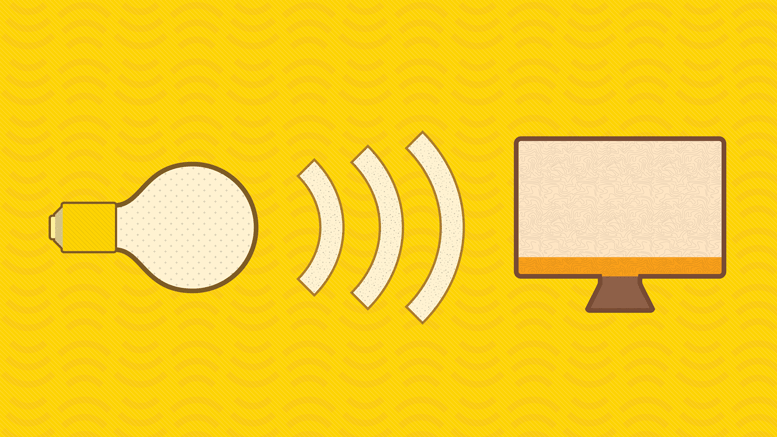LiFi is a new high-speed wireless technology that conveys data in the same way WiFi does – but with light. Created by University of Edinburgh professor Harald Haas in 2011, LiFi is expected to work with existing WiFi technologies to create a faster and more secure connection experience.
The electromagnetic spectrum is composed of radiation of all sizes and intensities. Some forms of radiation like gamma rays and X-rays are made up of very small waves that store a lot of energy. Gamma rays possess so much energy that acute exposures can cause serious damage to humans – they also created the Hulk.
On the other end of the spectrum are the very long and low-energy radio waves. Many forms of communication utilize radio waves, including WiFi. LiFi, however, is a form of visible light communication that uses the same range of radiation our eyes are fine-tuned to detect.
LiFi signals are produced by flickering light emitting diodes (LED). This flickering is too fast to be detected by the human eye, but special photodetector sensors on electronic devices can detect these Morse code-like signals, which are then converted into a language computers can understand: binary.
Early in 2015, research studies showed that LiFi could achieve data transfer rates as high as 28 gigabytes per second in the most optimal conditions and settings. To put it in perspective, LiFi would allow me to transfer the extended edition of the Lord of the Rings trilogy in 2.3 seconds.
An Estonian startup company took LiFi out of the lab for some real world tests around the same time. In their tests, LiFi achieved data transfer rates as high as one gigabyte per second. While these results are slower than the top speeds achieved in the lab, they are still 100 times faster than current average WiFi rates. In real life, I would be able to complete my Lord of the Rings transfer in about 12 seconds – that’s still pretty damn fast.
Unlike Wifi, LiFi is unable to pass through walls, resulting in smaller connection ranges. This may be slightly inconvenient, but this characteristic also makes LiFi more secure than WiFi. Stealing Internet from your neighbor using LiFi would require you to break and enter, or at the very least, hold your laptop outside of an open window.
LiFi’s inability to transfer across rooms also decreases the likelihood of interference between electronic devices. This is attractive for use in places with sensitive equipment like hospitals, planes, and nuclear power plants. Organizations that deal with sensitive information may also be better off using LiFi within the confines of their offices.
It seems as though Apple has already set its eye on LiFi. A post on Twitter shows a piece of code from the iOS 9.1 firmware that is labeled ‘LiFi Capability.’ Because of this, it is speculated that the iPhone 7 will be LiFi-compatible.
Being on Apple’s radar is never a bad thing – the company is doing well. They recently reported a first quarter profit US$18.4 billion.
Ultimately, any LED light source that can be outfitted with a controller microchip could be turned into a LiFi hotspot. As Haas described in a 2011 TED Talk, in the future every single light bulb in the world could be not only a source of illumination, but information as well.


